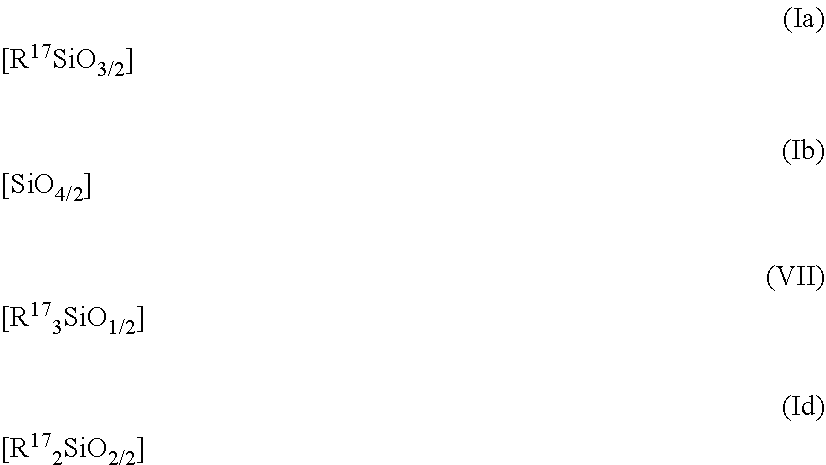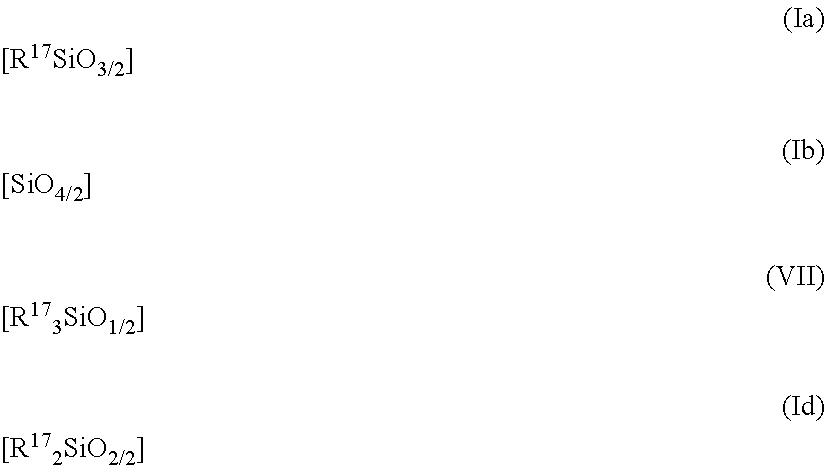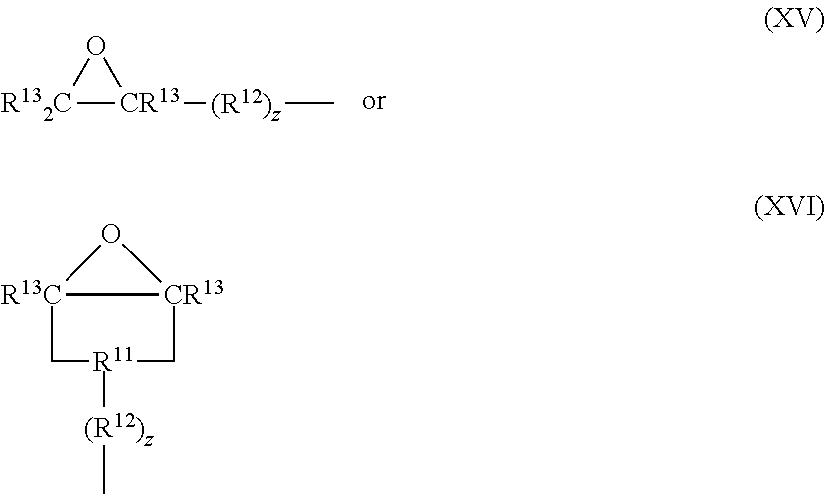Modified reactive resin compositions and use thereof for coating propping agents
a technology of reactive resin and coating, which is applied in the direction of coating, chemistry apparatus and processes, and wellbore/well accessories, etc., can solve the problems of reducing the oil or gas production rate, brittle coating or uncoated proppants currently available, and limited coating effect, for example with organic resins, so as to improve the leveling properties of coating processes and smoother and shinier surfaces. , the effect of reducing the level of reject material resulting from the sticking o
- Summary
- Abstract
- Description
- Claims
- Application Information
AI Technical Summary
Benefits of technology
Problems solved by technology
Method used
Image
Examples
example 1
[0142]A glass flask was purged with nitrogen, charged with 475 g of novolak “Resin 14772” (Plastics Engineering Company, Sheboygan, USA) and purged with nitrogen once again. The material was melted at 120° C. Then a stirrer was switched on at 420 rpm. 25 g of silicone resin 1 of the composition [PhSiO3 / 2]7.35 [(3-glycidoxypropyl)SiO3 / 2]4.20 [Me2SiO2 / 2]3.45 [MeO1 / 2]6.68 [BuO1 / 2]0.64 (molecular weight according to SEC (THF eluent): Mw=2100 g / mol; Mn=1300 g / mol; viscosity 90-135 cSt; epoxy equivalent weight 660-680 g / mol; epoxy value 1.85 mmol / g) were added and the mixture was stirred at 420 rpm for 10 minutes. The liquid material is poured hot onto a PTFE film and mechanically comminuted, and hence a granular material is produced.
example 2
[0143]By the process of example 1, 25 g of silicone resin 2 of the composition [PhSiO3 / 2]7.30 [(2-amino-ethyl)-3-aminopropyl-SiO3 / 2]2.62 [Me2SiO2 / 2]3.86 [MeO1 / 2]5.88 [BuO1 / 2]0.57 (molecular weight according to SEC (THF / acetic anhydride eluent): Mw=1800 g / mol; Mn=1200 g / mol; viscosity (kinematic, 25° C.) 120 mm2 / s; amine value 2.6-2.9 mmol / g) rather than silicone resin 1 were incorporated and a granular material was produced.
example 3
[0144]By the process of example 1, 25 g of silicone resin 3 of the composition [PhSiO3 / 2]9.44 [MeSiO3 / 2]5.67 [Me2SiO2 / 2]0.63 [MeO1 / 2]6.77 (molecular weight according to SEC (THF eluent): Mw=1800 g / mol; Mn=900 g / mol; viscosity (kinematic, 25° C.) 280 mm2 / s) rather than silicone resin 1 were incorporated and a granular material was produced.
PUM
| Property | Measurement | Unit |
|---|---|---|
| mol % | aaaaa | aaaaa |
| mol % | aaaaa | aaaaa |
| mol % | aaaaa | aaaaa |
Abstract
Description
Claims
Application Information
 Login to View More
Login to View More - R&D
- Intellectual Property
- Life Sciences
- Materials
- Tech Scout
- Unparalleled Data Quality
- Higher Quality Content
- 60% Fewer Hallucinations
Browse by: Latest US Patents, China's latest patents, Technical Efficacy Thesaurus, Application Domain, Technology Topic, Popular Technical Reports.
© 2025 PatSnap. All rights reserved.Legal|Privacy policy|Modern Slavery Act Transparency Statement|Sitemap|About US| Contact US: help@patsnap.com



